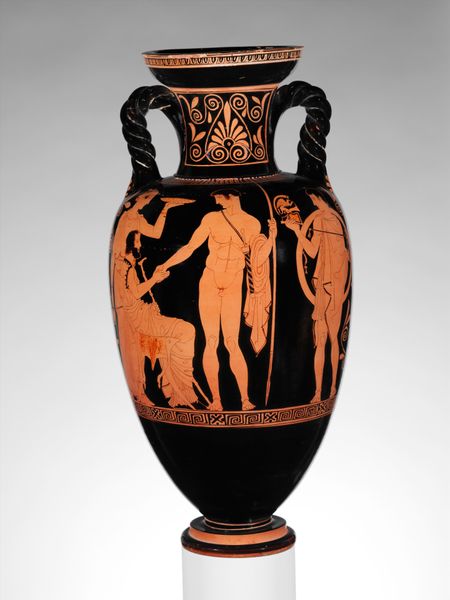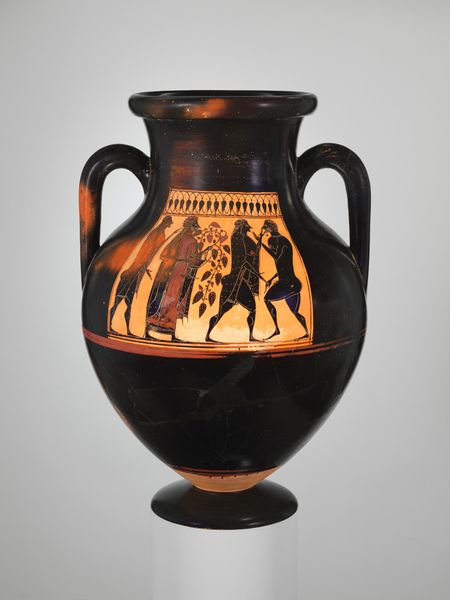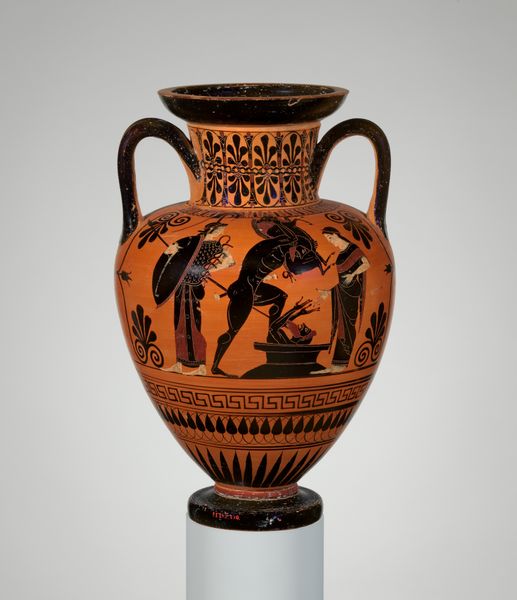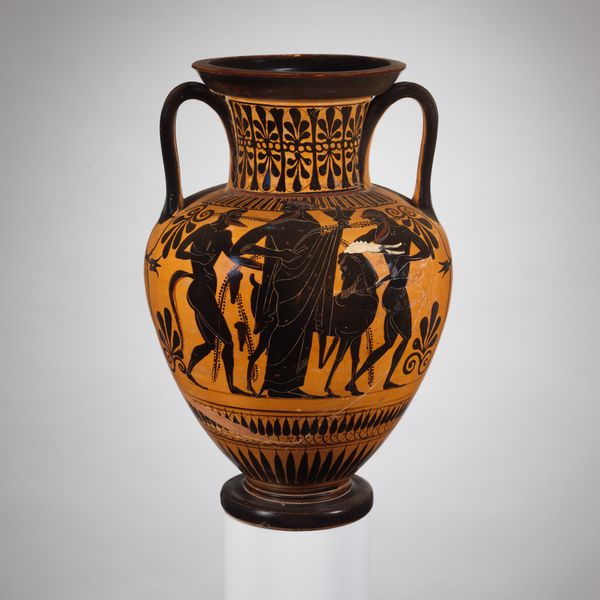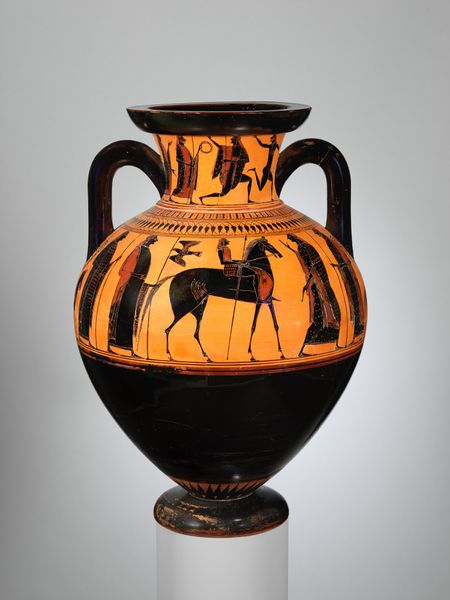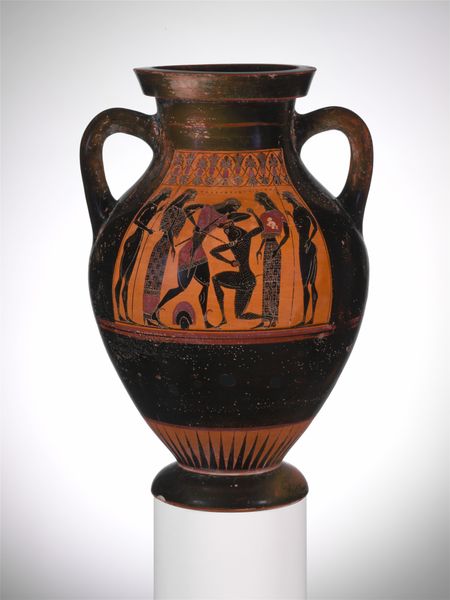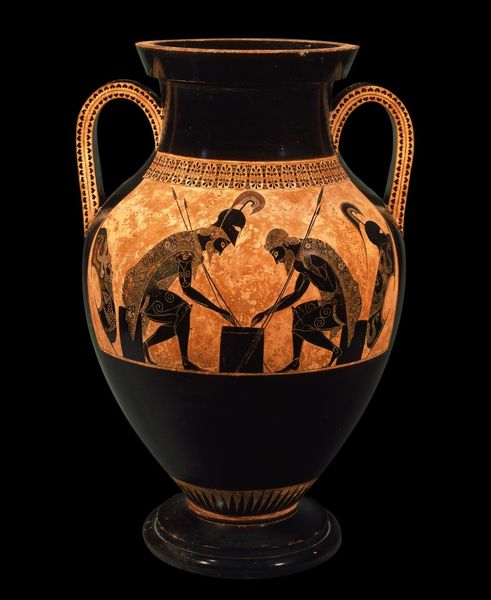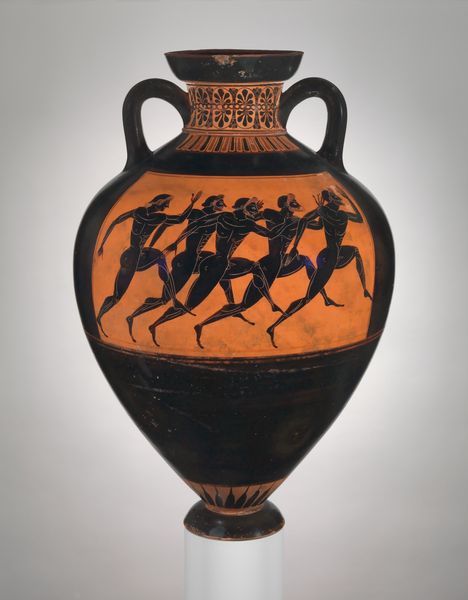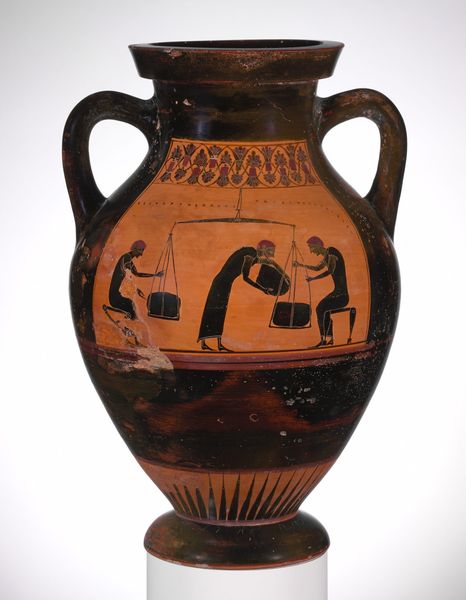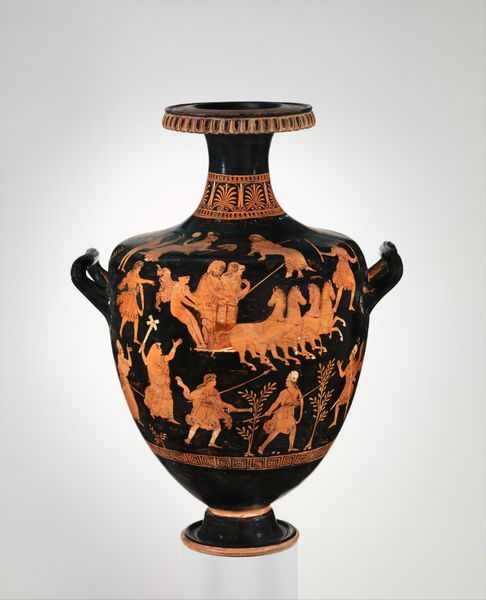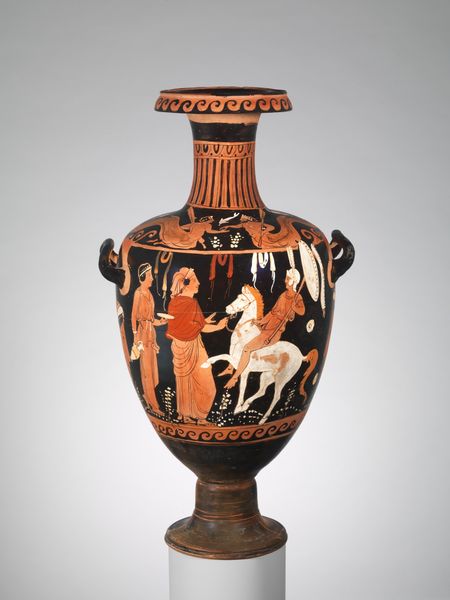
painting, ceramic, terracotta
#
painting
#
greek-and-roman-art
#
ceramic
#
figuration
#
roman-art
#
ancient-mediterranean
#
ceramic
#
genre-painting
#
terracotta
Dimensions: H. 22 5/8 in. (57.5 cm)
Copyright: Public Domain
Curator: What catches your eye about this terracotta amphora, made around 530 BC, and currently residing at the Metropolitan Museum of Art? Editor: Initially, it’s the contrast that really grabs me. That stark, glossy black against the warm terracotta figures gives it such a dramatic, stage-lit feeling. Like these guys are putting on a performance. Curator: The black-figure technique indeed creates a dramatic effect. Attributed to Andokides, this amphora embodies the transition from earlier, more decorative styles to a focus on narrative and the human form, situating the male nude as a figure of cultural and aesthetic interest. Editor: Narrative, you say? To me, it looks like an intense moment of athletic training... or maybe some ritualistic challenge? Something about those rings feels weighty. Perhaps literally and figuratively? Curator: The presence of these rings and the athlete's movements align with established traditions of competitive sports within Greek culture. Consider the socioeconomic privilege often linked to athletic pursuits, reflecting societal norms around masculinity and power. Editor: So, it’s not just a snapshot of some ripped dude working out. It is also an affirmation of social stratification! I guess everything is political even then? Though on a basic human level, there’s something so inherently beautiful about the curve of those figures, isn’t there? They've somehow captured strength and vulnerability at once. Curator: Absolutely. The human form as both object and subject is a core point. And the very conscious decision to represent that humanity within a constructed social hierarchy highlights complex intersections between art, culture, and political ideology of its period. Editor: It really makes you think about what remains, and how easily what we choose to leave behind speaks for us… I walk away from this striking amphora feeling more than a little self-conscious! Curator: Indeed, these objects carry more than just artistic intention. They transport the complexities of the past into our present.
Comments
No comments
Be the first to comment and join the conversation on the ultimate creative platform.
